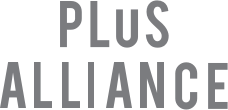Multiplexing
Immunolabeling is a tool that enables researchers to visualize spatial architecture of tissue sample and cell structures using antibodies targeted against specific proteins. The use of antibodies on fixed tissue and cells allows us to study cell biology, disease pathology, its progress and treatment response on cellular and subcellular level. With the current development in systems biology the demand has increased to not only identify important biological markers but to put them into a spatial context back inside the tissue and cell.
Using conventional chromogenic (IHC) or fluorescence (IF) immunolabeling we can visualize from 1 to 4 markers in one sample. Multiplex immunolabeling addresses the limitation of detection of more than 4 markers and takes us on a discovery road of unlimited marker combinations.
KGlmf is currently working with 3 different multiplex modalities.
- Multiplex immunohistochemistry using commercialized methods
- Autonomous multiplexing on a microscope with real time processing and analysis
- Single molecule multiplexing – DNA paint
1 - Multiplex immunohistochemistry using commercialized methods
There are multiple commercial methods available on the market that enable antibody multiplexing on tissue. The methods are based on use of primary antibody but vary in the use of secondary antibody and their application to the sample. As an example, Ultivue’s InSituPlex technology and Akoya Biosciences’ CODEX technology both rely on oligo-labelled primary antibodies for tissue imaging. The primary antibodies are conjugated with specific DNA oligonucleotide which is either amplified or visualized using fluorescently labeled DNA probe. Both technologies allow for simultaneous labelling of 4-40 antibodies however due to the specific design of the primary antibodies can be costly and only limited amount of antibodies is available on the market..
A more simple approach is to use the primary antibody in sequential labelling process followed by labelling of secondary antibody resulting in specific fluorescent label. An example of this technology is Akoya Biosciences’ Opal https://www.akoyabio.com/phenoptics. Opal labelling relies on HRP-labeled secondary antibodies to catalyze the reaction of tyramide signal amplification. Once the fluorescently labelled tyramide (Opal) has covalently bound to tyrosine residues on and around the protein of interest, heat retrieval is used to remove the antibodies without disturbing the Opal fluorescent signal; the cycle can then be repeated. Any primary antibody can be used for this technology. In KGLMF, the Opal workflow has been optimized for use on the automated IHC stainer Leica BOND RX and is integrated with Phenoptics instrumentation (Vectra Polaris slide scanner and Inform software analysis).
The optimization of the Opal multiplexing is demanding as all OPAL fluorescent intensities must be well balanced to eliminate spectral crosstalk between each antibody and takes between 6-8 weeks.
KGLMF offers OPAL staining of up to 8 antibodies. We carry out this as a service as well as we provide training for processing and analysis. If requested as a service the package includes antibody optimization using DAB IHC, OPAL monoplex and multiplex, final study multiplexing, Imaging on Vectra Polaris and assistance with image analysis.
Please click here for the current charges for this service.
OPAL project fee is valid for one calendar year and covers the following:
- optimization of antibodies using DAB and OPAL by KGLMF staff
- imaging on Vectra Polaris and other microscopes associated with antibody optimization using DAB and OPAL delivered by KGLMF staff
- initial image analysis, training and support in image analysis
- regular reporting
*Prices are subject to changes due to exchange rate fluctuations or price rises by suppliers If you require more information OPAL services provided by KGLMF and on your project price estimate, please contact Iveta Slapetova.
KGLMF has optimised the following antibody panel on human tonsil tissue:
CD3, CD4, CD8, CD11b, CD20, CD103, CD140b, CD68, PD-L1, FoxP3, PD1, PanCK
If you require to use any of these antibodies, please contact us directly.
2 – Autonomous multiplexing on a microscope with real-time processing and analysis
In KGLMF multiplexing can be performed on the epifluorescence or confocal microscope using Centoni microfluidics device with real-time processing and analysis happening at the microscope Nikon Ti2 and offline. This technology uses a system of primary antibodies and secondary antibodies labelled with Alexa Fluor fluorophores. The antibodies are applied to the sample using microfluidics device and resulting fluorescent signal is imaged on the Nikon Ti2 microscope. On completion of the imaging and online analysis the antibodies are eluted, and sample is incubated with new antibody. The whole process is repeated for as many antibodies as desired. The procedure is fully automated and integrated with the Nikon Ti2 microscope via Nikon NIS Elements JOBS module.
KGLMF currently offers a training and support for groups interested in using this technology. Should you wish to obtain more information please contact Michael Carnell.
3 – Single molecule autonomous multiplexing - DNA points accumulation for imaging in nanoscale topography – DNA PAINT
Super-resolution microscopy, such as single-molecule localization microscopy, enables the visualization of biomolecules at the nanoscale. BMIF houses a Zeiss Elyra 7 and a Nikon NSTORM microscope that are used for single-molecule imaging. Although they can both image with a variety of modalities the use of DNA paint lends itself most suitably to multiplexing. Single-molecule localisation historically has been limiting in the number of channels that can be sequentially imaged, due to spectral restrictions and also a reduced selection of suitable dyes. DNA paint has overcome many of these limitations. After using antibodies to label your structure of interest with a DNA oligomer, a fluorescent dye labelled bound to a complementary sequence is added. Bound dye can be distinguished from that which is freely diffusing due to its stable position. After some time, this will unbind and rebind providing an opportunity to temporarily visualise single molecules, gradually building up a super-resolution image. With the use of automated microfluidics this process can be repeated with a new set of freely diffusing DNA oligomers with a complimentary sequence targeted towards a different set of oligo-labelled antibodies, facilitating the ability to image numerous rounds of different structures one after the next, even using the same fluorophore. KGLMF currently offers training and support for groups interested in using this technology.
Should you wish to obtain more information please contact Michael Carnell.






